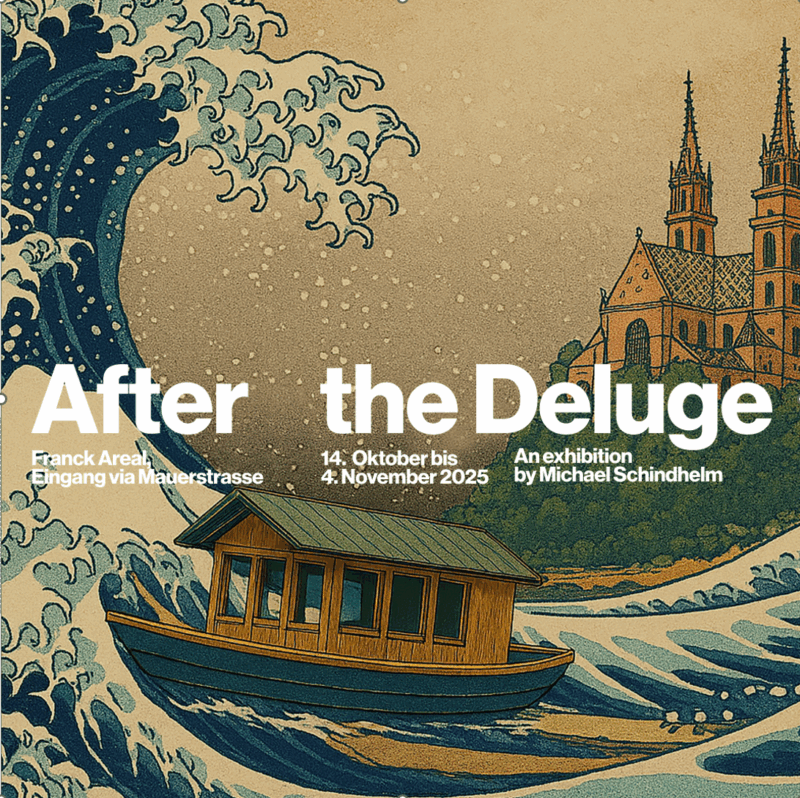After The Deluge
“After The Deluge” is an interactive art exhibition by Michael Schindhelm, held at the Kreislaufgebäude des Franck-Areals. The exhibition centers on the question “What could be?” (“Was könnte sein?”) 2and explores speculative utopian and dystopian futures for urban ecology and life in Basel after a climate collapse3. It critically examines current approaches to urban ecology and nature4.
The exhibition is designed for broad public participation through several dedicated rooms:
- The Limbo imagines a biblical flooding of Basel5.
- The Vault encourages visitors to bring plants and objects they deem valuable for a post-apocalyptic world, connecting to archetypes like Noah’s Ark and biodiversity preservation6.
- The Dream Room offers a hybrid (physical and digital) immersive experience envisioning a future called the Symbiocene, where humans are reintegrated into natural systems7.
- The Statement Room (accessible from May 2025) allows visitors to contribute immaterial items such as poems, texts, stories, or songs8.
The program is further enriched by talks and lectures from research and business representatives, with the immersive experience amplified by sound installations, videos, and performative elements9. “After The Deluge” is a collaboration with GIGA Design Milan, Alessandra Chiarelli, and Barbara Maggio10. The title is an ironic approach to the dramatic chapter of climate change11.
Schindhelm states that the exhibition operates from the hypothesis that a climate catastrophe will occur, rather than seeking immediate solutions12. The core question is “What will be after this kind of climate catastrophe?” 13, contemplating how society, economy, cities, landscapes, and global biodiversity will look after a dramatic climatic shift14. He describes the perspective as “apocalyptic optimism,” believing in a “thereafter” despite significant problems15. The exhibition encourages thinking about societal function and adaptation to dramatically changing conditions, including new technologies and social forms of coexistence16.
Crucially, it is a speculative and participatory art exhibition, not a purely scientific approach, using art’s “license to freedom” to speculate about the unknown17. A key narrative device is the biblical story of Noah’s Ark, prompting questions about what material (e.g., plants, furniture, technical devices) and immaterial (e.g., songs, prayers, poems, lectures) objects should be preserved for a post-catastrophe world18. The exhibition actively invites people to bring these objects, making it a collective endeavor illustrating what individuals consider important for a future following an escalation of the climate situation19.
The intellectual concept of this exhibition is based on Ernst Bloch’s thought of The Principle of Hope.

